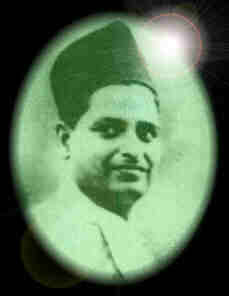
Gandhi’s assassin was born in 1910, in a small village in the margin of the Bombay-Poona conurbation. He was the eldest son and the second child in a family of four sons and two daughters. His father was Vinayak R .Godse, a petty government official who worked in the postal department and had a transferable job, which took him to small urban settlements over the years. Three sons had been born to him before Nathuram and all three had died in infancy. Both Vinayak and his wife were devoted and orthodox Brahmans and, understandably, they sought a religious solution to the problem of the survival of their newborn son. The result was the use of a time-honored technique: Nathuram was brought up as a girl. His nose was pierced and he was made to wear a nath or nose ring. It is thus that he came to acquire the name Nathuram, even though his original name was Ram Chandra. Such experiences often go with a heightened religiosity and a sense of being chosen. In this instance, too, the child soon enough became a devotee of the family gods. He sang bhajans before the deities and, according to his family, acquired the ability to occasionally go into a trance and speak as an oracle.
However, as the span of his social interests widened, his oracular abilities declined.
According to his brother, by the age of sixteen he had lost his concentration and ceased to be the medium between the family deity and the family. Nonetheless, a certain natural intellectual brightness persisted in spite of the absence of formal higher, education, and so did-as a biographer puts it-a certain natural dignity. In a religious family, even a lapsed oracle cannot fail to acquire a sense of being chosen.
Though he had failed to matriculate, Godse was a self-educated man with first-hand knowledge of the traditional religious texts. He knew for instance the entire Bhagavad-Gita by heart and had read texts such as Patanjali Yogasutra, Gnyaneshwari and Tukaram Gatha. In addition, he had a good command over written and spoken Marathi and Hindi and was widely read in history, politics, sociology and particularly in Gandhi’s writings. He was well acquainted with the works of some of the major figures of nineteenth-and twentieth-century India, including Vivekananda, Aurobindo, tilak and Gokhale.
Well-built, soft-spoken and like most Chitpavans fair-complexioned, nathuram thus projected the image of a typical member of the traditional social elite. But there was a clear discrepancy between this image and his life story till the day of the assassination. The Godses may not actually have been poor, but they were haunted with the fear of it throughout Nathuram’s younger days. So much so that at the early age of sixteen he had to open a cloth shop to earn his livelihood. This is less innocuous than it may at first seem: business was not merely considered highly demeaning for a Brahman; in lower middle-class Brahman families entry into business was an almost sure indicator of academic failure. To make things worse, Nathuram’s shop failed and he had to turn to tailoring, traditionally an even more lowly caste profession than business.
In sum, there was an enormous gap between Nathuram’s membership of a traditionally privileged sector of the Indian society on the one hand and his actual socio-economic status and experiences in adolescence on the other.
It is from this kind of background that the cadres of violent, extremist and revivalist political groups come. Not surprisingly, after a brief period in Gandhi’s civil disobedience movement in 1929-30, Nathuram became at about the age of twenty an active and ardent member of the Hindu Mahasabha, a small political party, and of the RSS, at that time virtually a paramilitary wing of the Mahasabha with all its key posts occupied by Maharashtrian Brahmans. Predictably, in the ardent politics of the Mahasabha he found a more legitimate expression of the Hindu search for political potency. Predictably, too, he did well in the party, becoming within a few years the secretary of its Poona branch. However, he did not find RSS militant enough, so, within a year or so, severing his links with RSS, Godse formed a new organization, the Hindu Rashtra Dal.
In 1944, Godse purchased the newspaper Agrani, with the help of donations given by sympathizers, to propagate his political views. But soon government proscribed the paper because of its fiery tone. Godse revived the paper under a new name, Hindu Rashtra.
>This time he took financial help from Narayan Apte, who became the papers managing editor. Hindu Rashtra was even more violently anti-Gandhi than its predecessor and it articulated the belief popular among some sections of Indians, particularly among the Bengali and Maharashtrian middle-income upper caste elements, that Gandhism was ‘emasculating’ the Hindus.
Whatever else Hindu Rashtra did or did not, it helped crystallize some of Godse’s main difference with Gandhi at the level of manifest political style.
Excerpts from the essay “The Politics of the Assassination of Gandhi” by Ashis Nandy. The essay appears in his book “At the Edge of Psychology: Essays in Politics And Culture” .
-0-
Buy more Books by Ashis Nandy.

Comments
Post a Comment
I always like to hear back :)
However, irrelevant comments and irrelevant links will not be published. Needless to say, same goes for abusive comment and spam. Leaving back links related to the topic is encouraged. I know it can be tempting but try not to leave your email ids, phone nos and CVs in the comment.